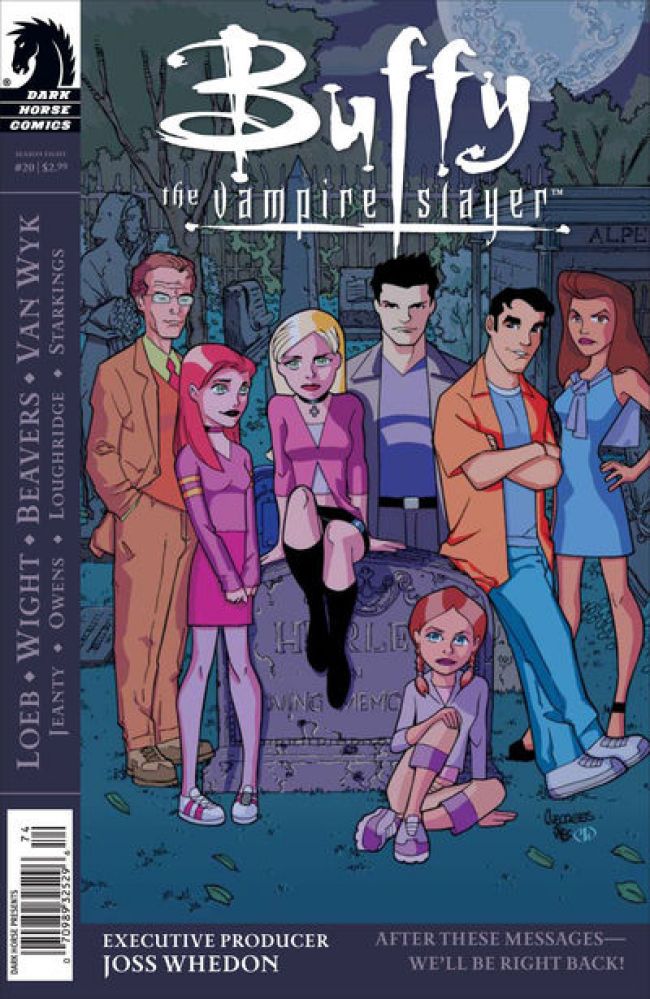Let's be clear. "Buffy The Vampire Slayer" was a fantastic television program, one of my favorites. There was room for light stuff, room for drama, room for the clever and supernatural. The characters were great, the dialogue was crisp, it was a solid hour.
When "Season 8" started (a pretty long time ago actually, I mean, how many episodes is 20 issues? Well, I guess a typical season is 24 episodes so, okay, we'd still be in Season 8, anyway, where were we? Oh yeah), it seemed to hold onto the tone of the end of the series, which I quite enjoyed actually, and built upon it in ways that took great advantage of the medium. There were wild things happening that would have cost way too much to film. It was fun.
This issue is a stand alone, which the original series was no stranger to. It focuses on that legendary never-made-it, "Buffy The Vampire Slayer: The Animated Series." One would have hoped that something of such consequence would be featured in a bit more integral fashion. Maybe a four issue stint in the "AnimatedVerse," Buffy trapped while here friends are in danger in the right dimension, and she must learn to conform to the rules of a cartoon universe, to survive, to triumph, and to save her friends.
But instead we get the equivalent of the Puppet Episode of "Angel." Now, people love that episode. It's one of those aberrations of fandom that I never understood (especially since that season of Angel contains one of the best episodes of anything in the Whedonverse, when Angel and his pals shift through time the entire episode in the filmed equivalent of that one spectacular Walter Simonson "Fantastic Four" issue). "Oh look, he's a puppet, har har, let's make like a million figures and plush dolls and cetera, and cetera."
So, instead of having any real consequence, it's just a rather shoddy framework with which to make a really problematic statement in terms of the Buffy mythos. Jeph Loeb is trying to say that, here in Season 8, Buffy has come so far from those halcyon days as a High School student, when things were so much simpler. It would resonate a bit more if that façade didn't fade from Buffy's day-to-day experience like halfway through Season 2. One of the great things about "Buffy" was always the fact that real drama wrought catastrophe on every aspect of her almost-was happy life as a teenager. Loeb is floating a faulty conceit. So that's a problem, especially to the long time Buffy fan, presumably the target audience here.
In good news; Wight, Beavers, and Van Wyk (the original designers of the Animated Series That Never Was) do a fantastic job illustrating the "Animated" Buffyverse. It's stylish and dynamic, clearly influenced by Dini's Batman but with its own sense of line.
I would have loved to see this concept expanded, to see this long awaited slice of Buffynalia given the same attention that other mystifyingly fan favorite episodes have been given for years now. Instead, we see what could have been something great stuffed into a message that decidedly is not.

